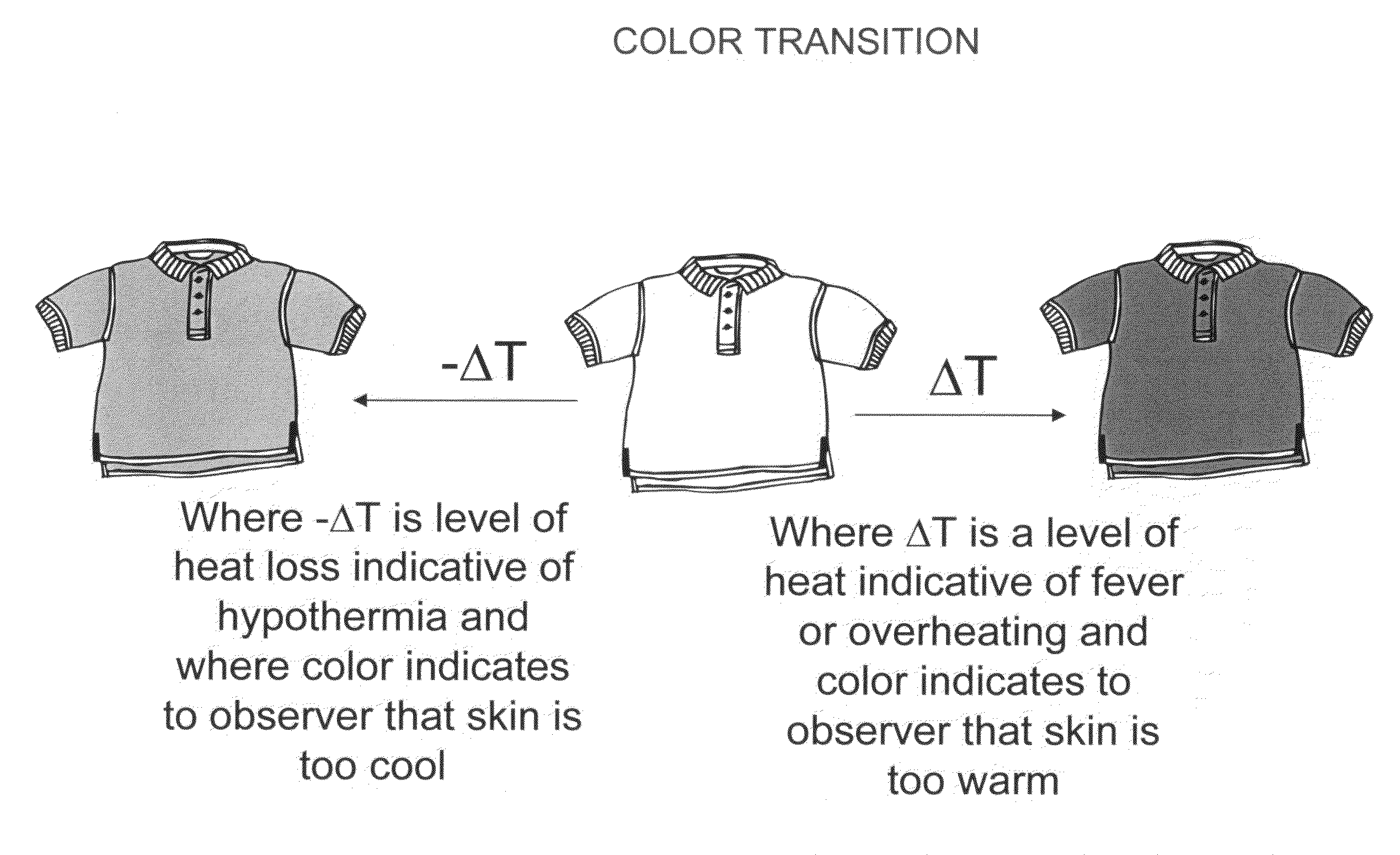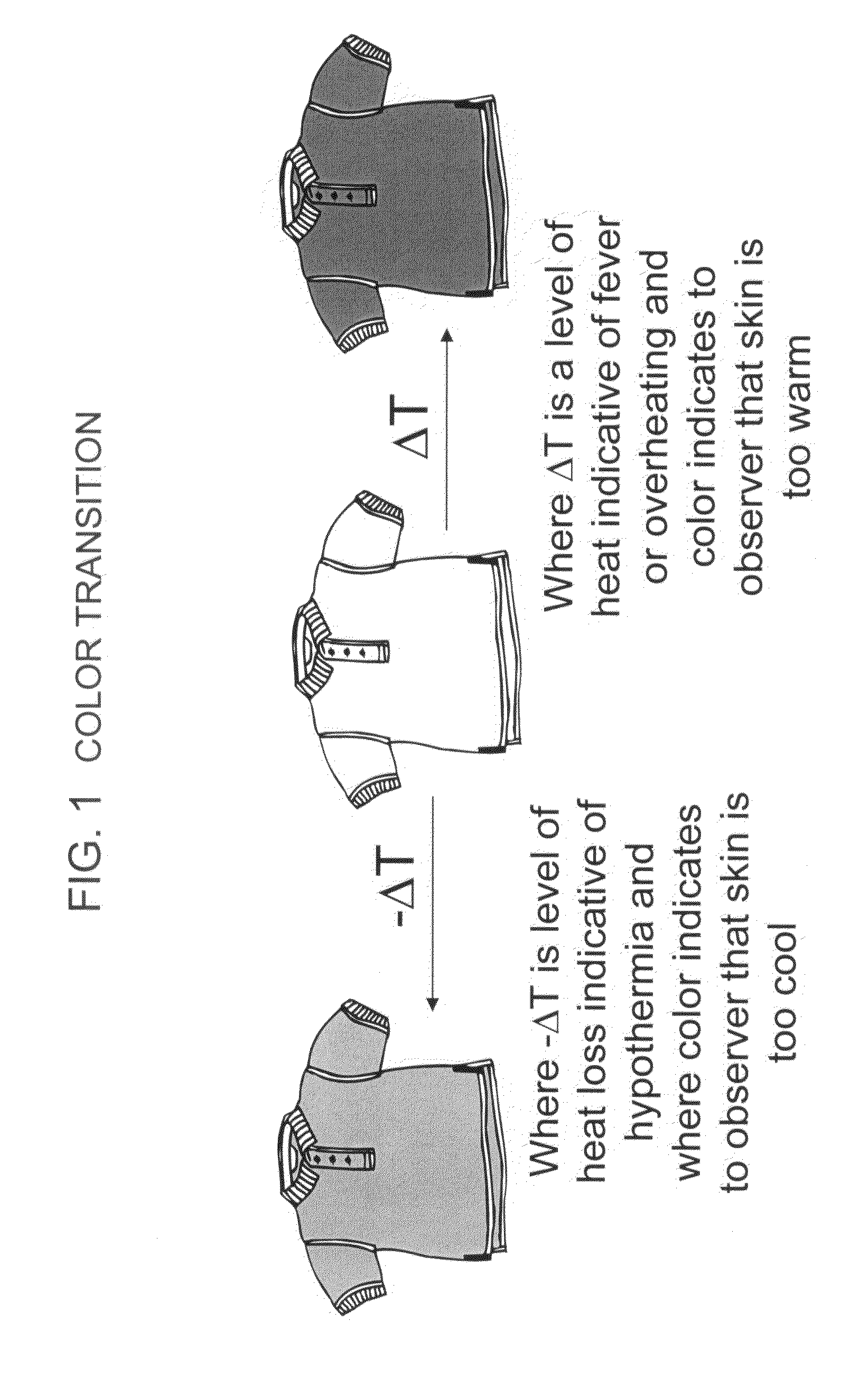Method and articles for sensing relative temperature
a relative temperature and temperature technology, applied in the field of methods and articles for sensing relative temperature, can solve problems such as a fever temperature of 100.4° f. or greater, a variety of health problems, and infants losing heat or overheating fas
- Summary
- Abstract
- Description
- Claims
- Application Information
AI Technical Summary
Problems solved by technology
Method used
Image
Examples
example 1
[0064]The ability to form a thermochromic spunbond web in accordance with the present invention was demonstrated. Specifically, 50 grams of a thermochromic masterbatch polypropylene resin was obtained from Matsui International Co., Inc. under the designation Chromicolor® (Blue type #37). The masterbatch was blended with 950 grams of Exxon 3155 polypropylene in a 5-gallon bucket (5 wt. % colorant). The blend was melt-extruded to form fibers under the following conditions:[0065]Spin pump temp=460° F.;[0066]Spin pump speed=30.7 rpm;[0067]Screw zone temp.=469° F.;[0068]Extruder zone 1=460° F., zone 2=460° F., zone 3=388° F.;[0069]Pack pressure=130 psi; and[0070]Residence time for the melt of 10-15 minutes.
[0071]Warming of the fibers with either a human hand, warm water or hot air gun caused a blue to white color change. The color change was reversible upon cooling.
example 2
[0072]The ability to form a thermochromic spunbond web in accordance with the present invention was demonstrated. Specifically, 35 grams of two different thermochromic masterbatch polypropylene resins were obtained from Matsui International Co., Inc. under the designation Chromicolor® (Blue type #37 and Red type #37). The thermochromic resins were blended with 930 grams of Exxon 3155 polypropylene in a 5-gallon bucket (7 wt. % colorant). The blend was melt-extruded to form fibers as described in Example 1. Warming of the fibers with either a human hand, warm water or hot air gun caused a purple to yellow color change. The color change was reversible upon cooling.
example 3
[0073]The ability to form a thermochromic spunbond web in accordance with the present invention was demonstrated. Specifically, 35 grams of a thermochromic masterbatch polypropylene resin was obtained from Matsui International Co., Inc. under the designation Chromicolor® (Blue type #37). The resin was blended with 3 grams of green pigment, and then blended with 463 grams of Exxon 3155 polypropylene in a 5-gallon bucket. The blend was melt-extruded to form fibers as described in Example 1. Warming of the fibers with either a human hand, warm water or hot air gun caused a purple to green color change. The color change was reversible upon cooling.
PUM
 Login to View More
Login to View More Abstract
Description
Claims
Application Information
 Login to View More
Login to View More - R&D
- Intellectual Property
- Life Sciences
- Materials
- Tech Scout
- Unparalleled Data Quality
- Higher Quality Content
- 60% Fewer Hallucinations
Browse by: Latest US Patents, China's latest patents, Technical Efficacy Thesaurus, Application Domain, Technology Topic, Popular Technical Reports.
© 2025 PatSnap. All rights reserved.Legal|Privacy policy|Modern Slavery Act Transparency Statement|Sitemap|About US| Contact US: help@patsnap.com



